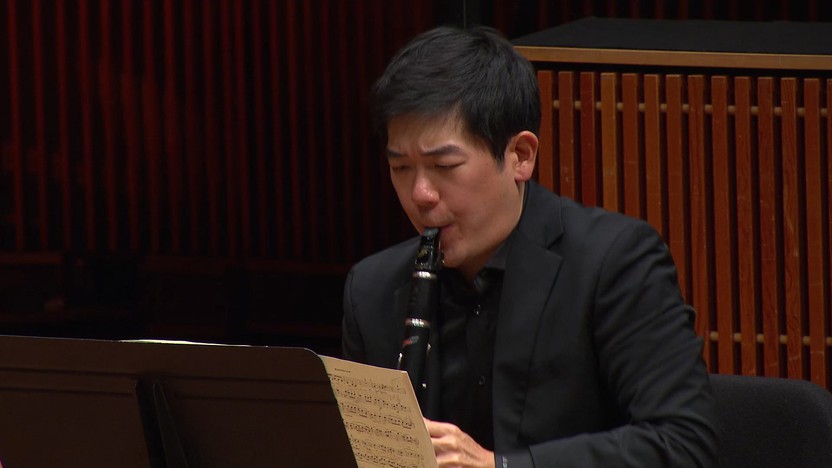Express Concert: Mozart’s Symphony No. 40



The Finnish-born clarinetist Bernhard Henrik Crusell played his way into a Swedish military band at the age of 13 and the Swedish court orchestra in Stockholm at 18, a seat he held for the next forty years while also building a career as a soloist, composer and translator of operas into Swedish. His composing got a boost when he took a six-month sabbatical in 1803 to take composition lessons in Paris, and another trip abroad in 1811 succeeded in getting him signed with a publisher in Leipzig, Germany. That firm published his second clarinet concerto in 1818, his Opus 5.
Crusell’s F-minor concerto exemplifies the prevailing style in that period, when concertos were designed first and foremost to show off their soloists. When the clarinet enters after the orchestra’s stage-setting tutti, it launches immediately into the sort of wide-ranging swoops and leaps that have always defined the clarinet’s nimble identity — especially for Crusell, who had the advantage of playing on a German instrument with a cutting-edge design of 11 keys. After a peaceful Andante pastorale, the Rondo finale returns to minor-key drama as a vehicle for instrumental excitement.
Aaron Grad ©2023

Wolfgang Amadeus Mozart wrote his three final symphonies in the span of eight weeks during the cash-strapped summer of 1788, when he was reduced to pleading with friends for loans, moving his growing family to the suburbs, and pursuing dead-end leads for his music. Whatever opportunity prompted the symphonies seems not to have panned out, and he probably didn’t hear all three before he died. He did revisit the G-minor symphony at some later point to add clarinets and make other adjustments, suggesting that he found an audience for that one at least.
The Symphony No. 40 in G Minor was only the second example that Mozart set in a minor key, and it was a world apart from the Symphony No. 25 that he wrote as a seventeen-year-old. This bigger, bolder, proto-Romantic symphony begins with a peculiar and essential quirk of phrasing that assigns the violas to quiver through one measure of bare accompaniment. When the violins enter a moment later with a theme that sighs three times before leaping up, there is a subtle rub between what our ears hear as the strong beat and the underlying architecture of the phrase. The result is a persistent and restless feeling of propulsion, as if each phrase must scrabble forward to stay ahead of the surge.
The Andante second movement is the only portion of the symphony that moves away from the turbulence of G-minor, and even here patterns of hiccupping rhythms and delayed resolutions recall the stormy first movement. The Menuetto is unusually grave for the portion of a symphony that often serves as a light diversion, with respite only coming in the contrasting trio section. The finale, with its heated dialogue of soft and loud phrases, embodies the passion and drama that Mozart honed on the operatic stage, most recently in Don Giovanni.
Aaron Grad ©2025
Our Express Concerts are 60-75 minutes of music without intermission. Learn more at thespco.org/express.
Get driving directions and find nearby parking.
Find dining options close to the venue.
View seating charts to find out where you'll be seating.
Get driving directions and find nearby parking.
Find dining options close to the venue.
View seating charts to find out where you'll be seating.
